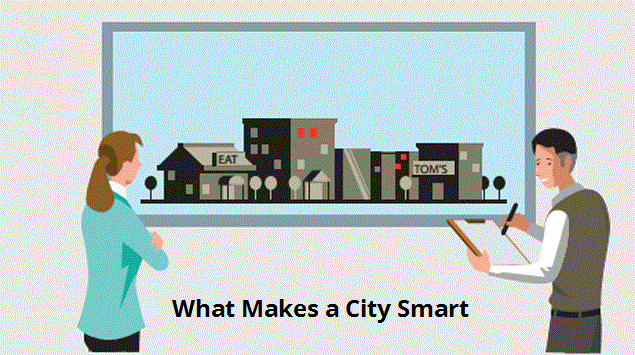Smart City – What it means
Cohesive, Integrated, Resourceful- A smart city is all this and much more
What is a Smart City
‘Smart City’ – we have often heard many references to this term recently and the ensuing developments are being enthusiastically tracked by everyone. The announcement made by the government to create 100 smart cities across India by 2022 is being looked upon with anticipation and much curiosity.
It has led to the obvious interest and inquisitiveness as to how different a ‘smart city’ would be as compared to the one we are currently living in. After all, the present city we reside in does provide housing, employment opportunities, traffic management and energy resources; so how exactly would one benefit from a ‘smarter city’. Let’s attempt to find some answers to these facts.
Smart Answers
So what exactly comprises a smart city? Among many intelligent features, a smart city is one which uses digital technology solutions to enhance the quality of life of the citizens while simultaneously aiming to reduce the cost and consumption of resources.
The need for a city such as this has arisen out of the glaring need to handle the large scale urbanization and massive population boom. Experts predict the world’s urban population would double by 2050 and this obviously means an added pressure on resources and calls upon an organised, structured way of life for citizens.
Cities would need to get ‘smarter’ in order to find new ways of managing complexities while concurrently increasing efficiency. In fact, the basic premise of a smart city is to make urban living convenient and in tune with the needs of the Gen-Y. Imagine if our cities could give us live, real-time updates on traffic conditions, pollution, parking spaces and energy usage, we would be able to re-shape our economies and largely improve environmental health of the city for residents as well as visitors.
On the threshold
As India now steps towards the direction of creating smart cities, there are numerous examples of cities around the world which have invested considerably in this technology to reap the benefits of this digital transformation. Top smart cities around the world include Barcelona (environment and smart parking), New York (street lighting and traffic management), London (technology and open data metrics), Nice (cohesion between different agencies and environment) and Singapore (creative use of technology).
Characteristically, smart cities evolve towards a strong integration of all dimensions of human intelligence, collective intelligence and lmj9-ok partificial intelligence within the city. Technologies such as ultra-low power sensors, wireless networks and web and mobile based applications are the key drivers of this revolution.
Implemented across the world
Santander city in Spain has 20,000 sensors connecting buildings, infrastructure, transport, networks and utilities providing an opportunity to monitor the levels of pollution, noise, traffic and parking. This is a typical example of an ‘online collaborative sensor data management platform’ which is an on-line database services. This service allows sensor owners to register and connect their devices to feed data into an on-line database for storage and allows developers to connect to the database and build their own applications based on that data.
Amsterdam, for instance, began the initiative way-back in 2009 and it involved a collaborative effort of projects between local residents, governments and businesses. A similar interconnected platform was devised to enhance the city’s real-time tracking and decision making capabilities.
Mobypark, a resident developed application allows owners of parkingplaces to rent them out to fellow residents for a fee. This data in turn is fed into the central platform to determine parking demand and traffic demand in Amsterdam. Another project facilitated upgrades of street lamps to allow municipal councils to dim lights based on pedestrian usage.
India- Looking ahead
India and U.S. signed up three memoranda of understandings (MOU) to developing the three cities – Ajmer, Allahabad and Vishakhapatnam for its significant contribution to tourism and trade. On a national scale, the cabinet recently cleared the government’s flag-ship schemes – 100 smart cities and an urban rejuvenation program for 500 towns and cities. Under the smart cities scheme each city selected through a “city challenge” competition would get central assistance of Rs. 100 crore per year for five years.
According to reports, the evaluation criteria for stage-1 of the competition within the state/UT involves points system, such as existing service levels (25 points), institutional systems and capacities (15 points), self-financing (30 points) and past track record (30 points).
There will be special focus on adequate and clean water supply, sanitation and solid waste management, efficient transportation, affordable housing for the poor, power supply, robust IT connectivity, e-governance, safety and security of citizens, health and education.
Working towards the goal
Judicious investment in the right kind of technologies and priorities will help the country get on the fast track towards the objective of Smart Cities. The creation of cities that are not only smart, but also sustainable and efficient can only be achieved if the public and private bodies join hands and work towards it hand in hand.


